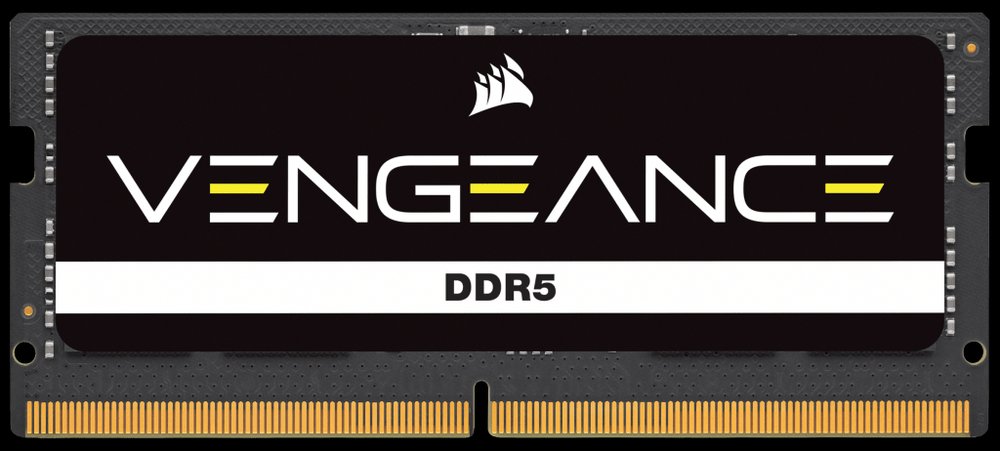It’s fair to say that there’s plenty of jargon around computer memory. To start with, you have to get your head around the underlying technologies so as not to end up buying something incompatible with your machine. You also need to maintain an overview of how it all works so that you end up with an optimal kit for your system. On top of that, it’s a good idea to keep an eye on newer technologies to make sure you’re prepared for the future. Of course we're here to help as well if you're just looking for the Best RAM for Gaming in 2024.
In this article, we’re going to limit ourselves to just the physical packaging of modern memory. Even so, that seemingly rigid remit still leads to plenty of options. Below you’ll find plenty of information about the current state of memory, what to look out for when buying RAM for your own machines, as well as where RAM is potentially going. So, strap yourself in, and get ready to expand your mind with respect to computer memory.

DIMM stands for Dual In-line Memory Module, and it’s basically the official name for what most of us refer to as a stick of memory. A DIMM is a rectangular circuit board with memory chips mounted on it and a connecting edge covered in pins designed to be plugged into a motherboard.
The reason it’s called a DIMM and not a SIMM (Single In-line Memory Module) is that the pins are present on both sides of the module and represent different circuits, providing a 64-bit data path as opposed to a 32-bit one. DDR5 and DDR4 DIMMs feature 288-pins, with a notch offset in a slightly different place to ensure that you can’t plug a DDR5 DIMM into a DDR4 slot and vice versa.
While the term DIMM does define the physical makeup of the memory module, it doesn’t, say anything about the capacity or the performance of the memory. A DIMM can, for instance, have memory chips on only one side of the module, or it could be on both sides. DIMMs generally adhere to the JEDEC specifications for compatibility reasons, which means that DIMMs are widely compatible across numerous systems and platforms.
Unbuffered memory modules are the most common type of RAM used in modern PCs. These are just a type of DIMM and for most users the names are interchangeable. As the name suggests, UDIMMs do not have a buffer or a register between the memory controller and the memory chips. The memory controller, which you’ll find in the processor package itself, communicates directly with the memory chips.
One of the advantages of unbuffered modules is that the lack of a buffer reduces latency, leading to faster performance. They’re also simpler and slightly more affordable to manufacture. UDIMMs are also the most widely supported type of memory available. Chance are your computer is designed to use UDIMMs unless it states otherwise.
Most CORSAIR DDR4 and DDR5 memory aimed at desktop users will use UDIMMs. Whether that’s VENGEANCE RGB DDR5, DOMINATOR TITANIUM, or VENGEANCE LPX DDR4 memory.

Registered DIMMs are primarily used in workstations and servers where higher reliability and stability are paramount. RDIMMs include a register, or buffer, between the memory controller and the memory chips to help stabilize and manage the electrical load of the memory modules. This allows RDIMMs to support larger memory capacities than is possible with UDIMMs.
RDIMMs tend to support ECC (Error-Correcting Code), which helps to detect and correct data corruption as well, for improved reliability. It’s worth noting that RDIMMs do have slightly higher latency compared to UDIMMs, but given the market such memory sticks are aimed at, where reliability trumps performance, that’s less of an issue.
As is evident in the name, CORSAIR WS DDR5 RDIMMs are registered DIMMs that also pack ECC support. These are designed for use in workstations, and you can find out more about them in this article on WS DDR5 RDIMMs.

The most recent variation of the humble UDIMM is the Clocked Unbuffered Dual In-line Memory Module. Such modules have been designed to improve the signal integrity of memory by including a clock driver (CKD) on the DIMM. This tiny integrated circuit (IC) is responsible for regenerating the clock signal used by the memory chips and thus improve stability and offer support for even higher operating frequencies.
CUDIMMs are expected to make an appearance later this year and will launch with memory kits featuring high clock speeds, with the potential to hit higher frequencies than are possible on normal UDIMMs. These new modules will also be compatible with existing platforms, using the same 288-pin connector that existing DDR5 UDIMMs use. This should allow for a relatively smooth transition to the new standard.
Small Outline DIMMs are specifically designed for use in devices where space is limited, such as in laptops and small form-factor desktop machines. SO-DIMMs are roughly half the width of DIMMs but otherwise have a similar structure, featuring a circuit board holding memory chips. SO-DIMMs also support the same technologies that they’re desktop-bound siblings do, just in a more compact form factor.
A good example of a SO-DIMM offering would be our VENGEANCE SODIMM DDR5 kit, which boasts higher capacities than you’d typically find in most off the shelf laptops. It’s always worth checking compatibility for your laptop or small form factor desktop before buying an upgrade. You can do so by checking out the CORSAIR Memory Finder.

PRODUCTS IN ARTICLE